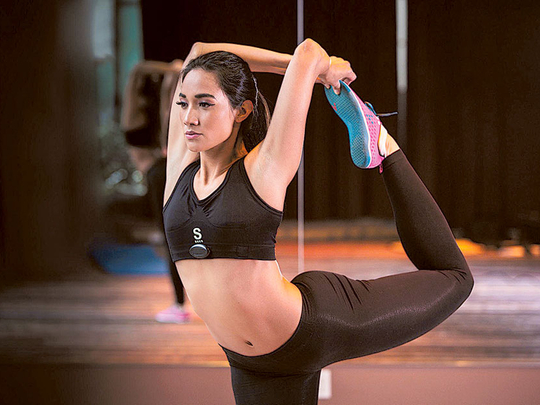
Washington: The future of health looks a lot like the fitness tracker you might already wear on your wrist or your waistband.
But instead of just keeping tabs on your activity level, high-tech sensors embedded throughout your home, your car and maybe even under your skin will keep tabs on your every waking moment.
And your sleeping moments, too.
“A whole new day is coming,” said Dr Eric Topol, a cardiologist and director of the Scripps Translational Science Institute in La Jolla, considered a pioneer in the field of digital medicine.
This near-continuous data dump will revolutionise our health care system, Topol predicted, and will lead to micro-personalisation of our diets, workouts, homes and even medical treatments.
The upshot, he said, is that this data onslaught puts control of your health back where it belongs: with you.
His new book, The Patient Will See You Now, documents the looming power shift, courtesy of our smartphones.
Here’s what it might look like: Light, temperature and movement sensors in your bedroom will help you craft night after night of deep, peaceful sleep, allowing you to wake rested and energised — and without an alarm clock.
A tricked-out bathroom scale might reflect not just your weight but also the air quality in your home, your stress level and your resting heart rate. An elevated heart rate could suggest a cold is on the way. So you might want to take it easy for the next day or two. (And maybe cosy up to a bowl of chicken soup.)
But if your heart rate is a beat or two lower, you’ll know that your workout regimen — the one tailored for your precise fitness level, body shape and blood type — is progressing nicely. You’ll polish your pearly whites with an electronic toothbrush that will tell you if you’ve brushed long enough or if you missed a spot, and will compile that information for your next dental visit.
Over the course of the day, you’ll eat meals designed for your body type, family health history and fitness goals. (Luckily, you won’t have to bother with dreaded food diaries because sensors in your plate, fork and even food scales and containers will do most of the work.)
You’ll be able to order blood panels and Skype with health care professionals halfway around the globe (and for a quarter of the price). And you can continuously monitor yourself _ or a loved one, such as an ageing parent _ for key health markers such as blood pressure, glucose and hydration levels, inflammation, oxygenation and even the quality of your waste.
At this point, you may be thinking, “Why would I want to know all that?”
But others wonder, “Why wouldn’t you want to know all that?”
“We’re all very unique, and everybody has a different lifestyle,” said Shawn G. DuBravac, the senior director of research for the Consumer Electronics Assn., which recently wrapped up its annual Las Vegas trade show, where many new gadgets and gizmos were unveiled, including that interactive toothbrush. “A data stream allows for a customised approach to your health.”
All those personalised data will be seamlessly harvested, synthesised and organised into a personalised dashboard that provides you — and anyone you choose — with the biofeedback you’ll need to continually tweak and finesse your way to optimal health.
“The message from the medical profession used to be, ‘Everyone should eat this’ or ‘Everyone should do that,’” Topol said. “But that was all wrong. We were practicing mass medicine at a dumbed-down level. Today, medicine can be personalised.”
Both men said this “datafied” future will eliminate the gap between the haves and the have-nots when it comes to basic health care. As smartphones become widely available, health care becomes more widely available. “It’s really the democratisation of medicine,” Topol said. “Everyone will have access to this knowledge.”
The bigger challenge, he said, will be bridging the gap with the less tech-savvy among us and making sure they aren’t left behind.
In many ways, the datafied future is already here, as much of that data are available but not yet used.
The challenge, DuBravac said, will be to gather information from multiple sources and present it in a way that inspires more healthful activity and doesn’t drive users to hypochondria.
Does your fitness tracker, for instance, motivate you to move 10,000 steps a day over the long run? But what if it alerted you that on days when you get 30 minutes less sleep than usual you tend to miss your goal?
“That might motivate you to get more sleep,” DuBravac said.
The day for such an interface is drawing closer, he said, and the segments of the population that might benefit the most are baby boomers and their caretakers.
The potential uses are limitless if you look at the world as one big potential sensor, Topol said.
What if you were able to get an alert that your elderly mother’s blood pressure was lower than usual, based on a wrist sensor? You could call and make sure she takes her medicine before something serious happens. A car’s steering wheel could trigger an insulin warning for diabetics. Nano-sensors released in the bloodstream could monitor for heart attacks, autoimmune attacks, cancer and strokes before they happen, Topol said.
A microchip embedded in a pill could help document when someone takes — or fails to take — medication. “Study after study shows that 50 per cent of people of all types don’t take their medicines the way they are prescribed. We can do a lot better if we can track it.”
The ability to monitor vital signs could even allow a stable patient to recuperate at home instead of in a hospital bed.
“I don’t see this as Big Brother,” Topol said. “You can keep all this information to yourself; you don’t have to share it with anyone. You are in the driver’s seat.”
— Los Angeles Times












